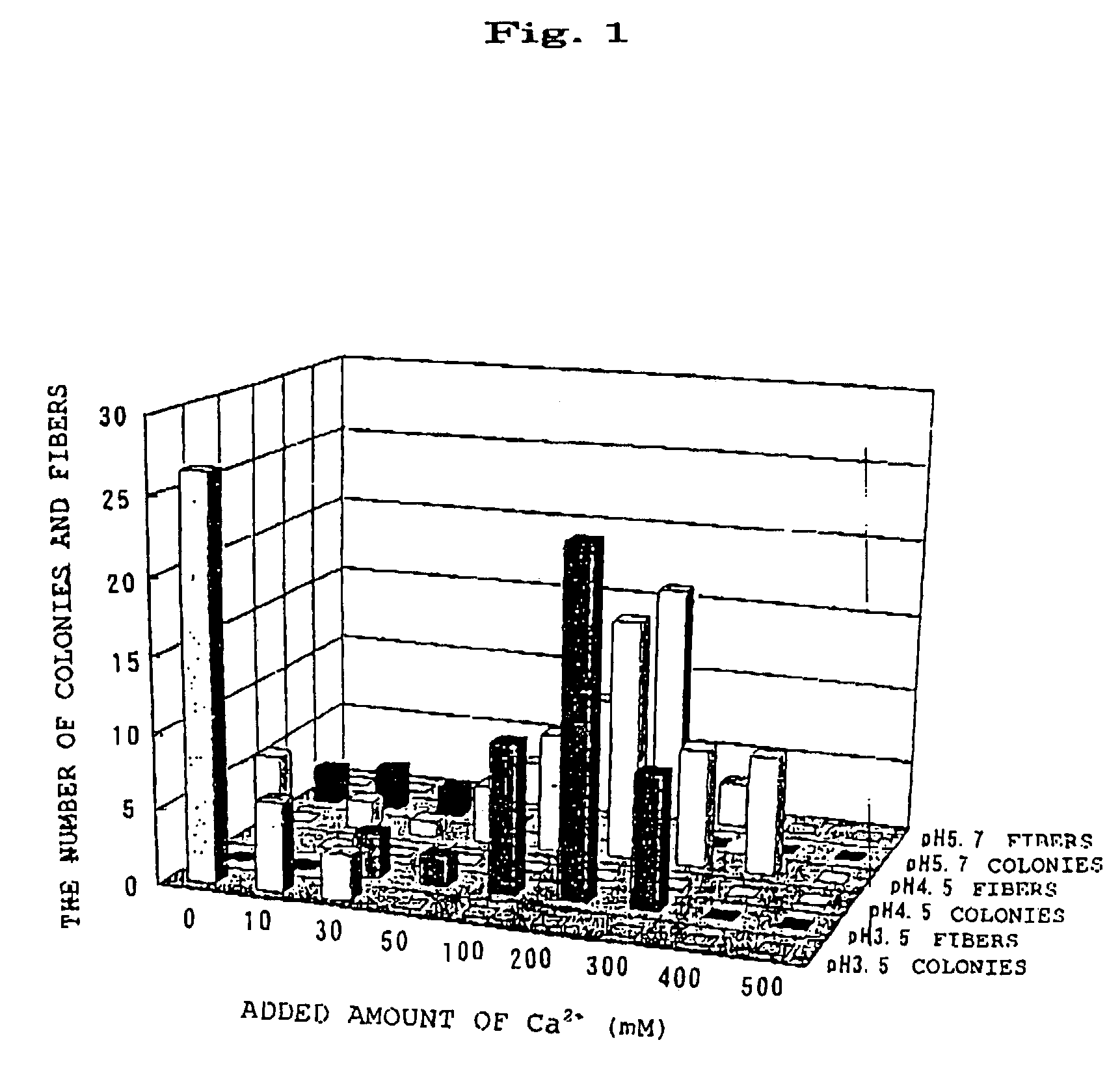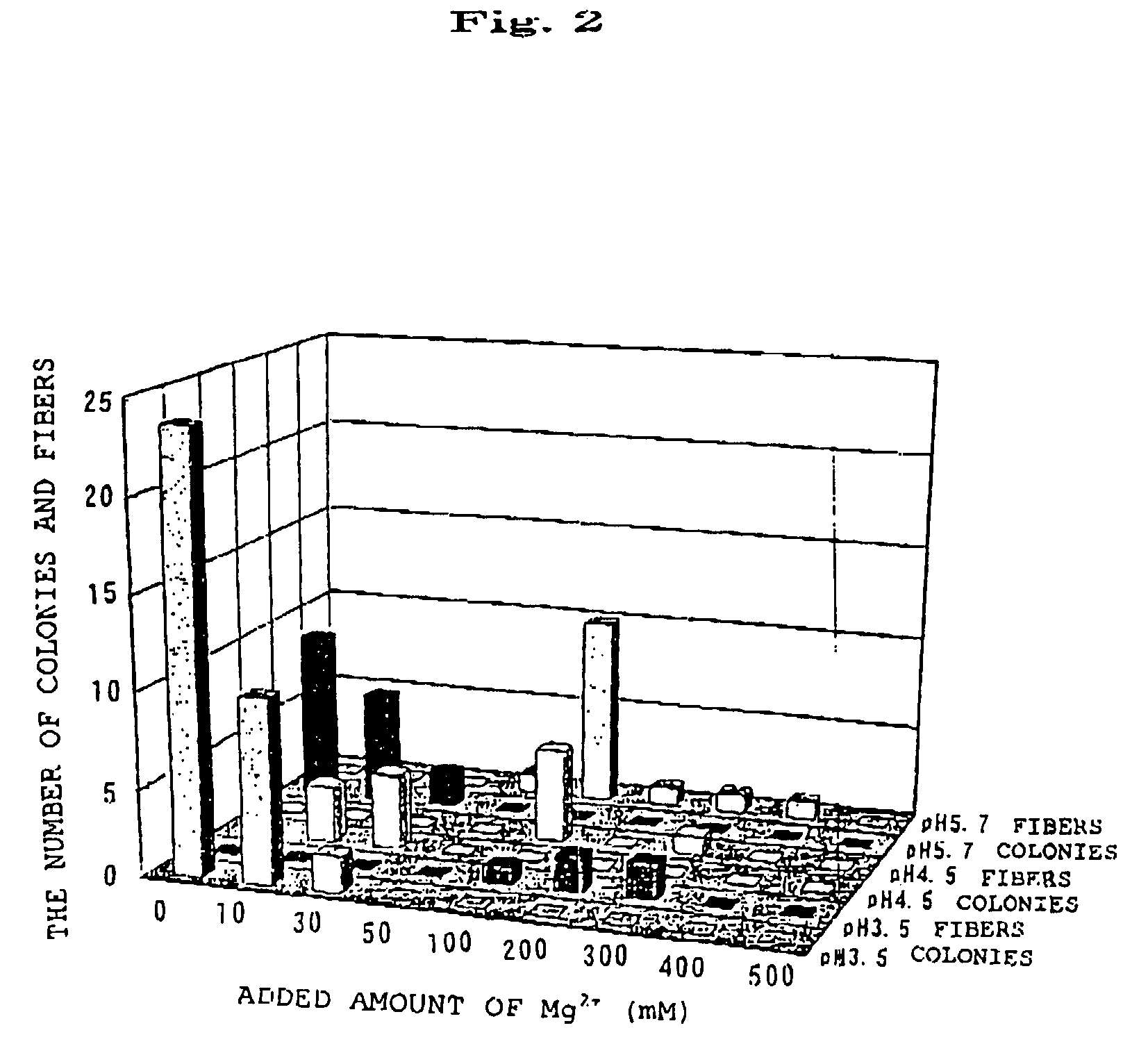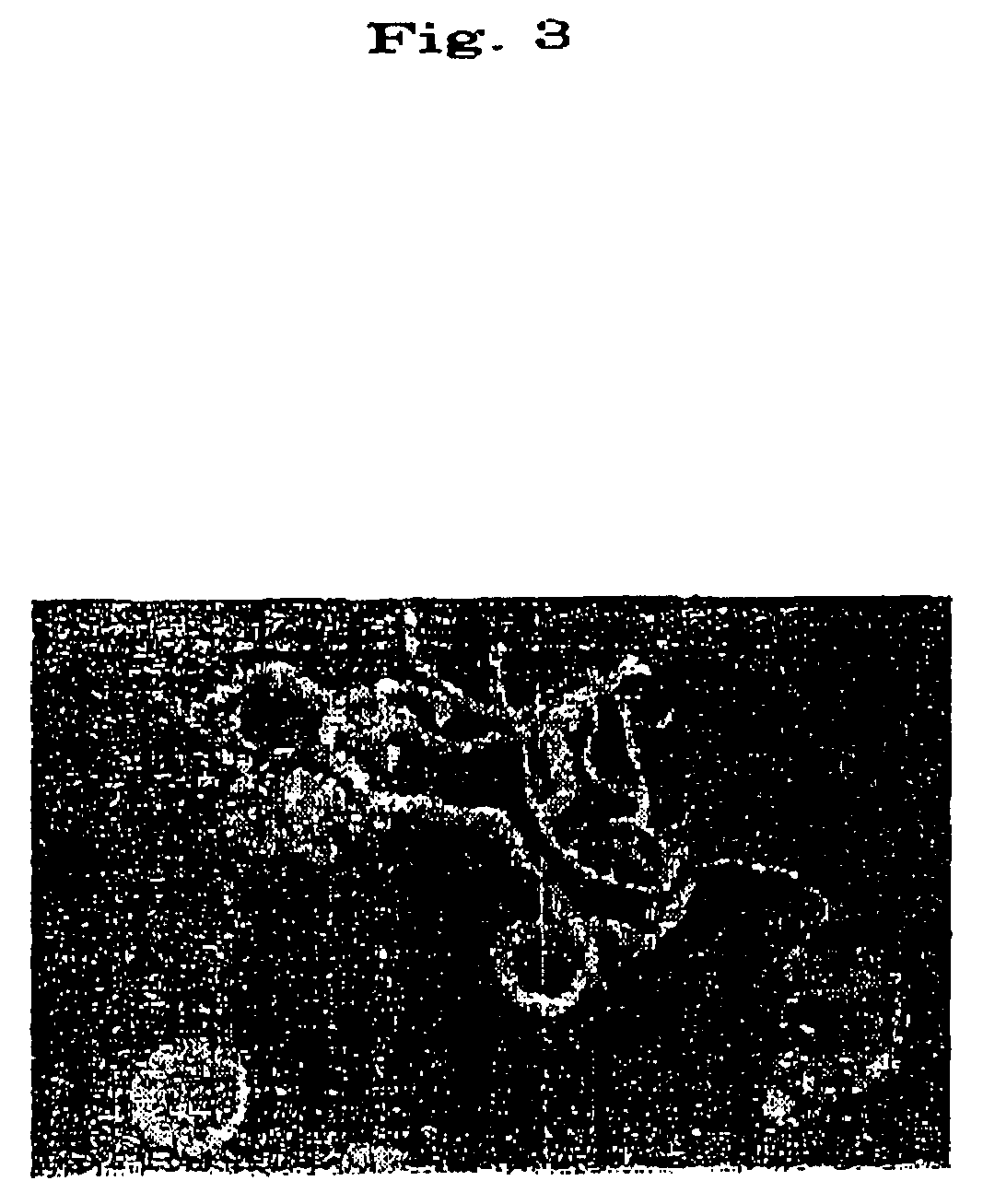Process for producing non-cellulosic callose fiber by plant protoplast and callose fiber
a plant protoplast and callose fiber technology, applied in the direction of biochemical apparatus and processes, sugar derivates, organic chemistry, etc., can solve the problems of non-regenerative petroleum resources, insufficient energy-conserving production processes of natural fibers, and problems such as problematic synthetic fibers, to achieve the effect of reducing environmental load, reducing production costs, and consuming less energy
- Summary
- Abstract
- Description
- Claims
- Application Information
AI Technical Summary
Benefits of technology
Problems solved by technology
Method used
Image
Examples
example
Example 1
[0028]The protoplasm of white birch (Betulaplatyphylla var japonica) was cultivated, and callose fibers were produced by adding Ca2− and Mg2+ as the inorganic ions, in the form of CaCl2 and MgCl2, at various pH values and ion concentrations. The pH values were adjusted using KOH and HCl before autoclave sterilization at 121° C. for 20 minutes.
[0029]The following reagent and hormones were added to a medium with half the strength of MS liquid essential medium:
[0030]
0.6 Mmannitol0.09 Msucrose 1 μMnaphthalene acetic acid (NAA) 10 μMbenzyl adenine (BA)
[0031]The results of fiber and colony production are shown in FIG. 1 (for Ca2−) and FIG. 2 (for Mg2+). The results in FIG. 1 show that callose fiber production was evident under Ca2+ concentratiosn of 100 to 400 mM at pH 3.5 to 5.7, particularly under a Ca2+ concentration of 200 mM at pH 3.5 to 4.5.
[0032]Further, FIG. 2 shows that callose fibers were favorably produced under Mg2+ concentrations of 100 to 400 mM at pH 3.5 to 5.7...
example 2
[0033]The protoplast used in Example 1 was cultivated under a Ca2+ concentration of 200 mM with pH of 3.5 to 4.5 for 3 months. Production of giant fibers was confirmed as indicated in the fluorescence micrograph of FIG. 3.
[0034]FIG. 3 shows the fluorescence micrograph of the fiber after staining with calcofluorol. The fiber was identified as callose consisting of β-1,3-glucan chains by staining, antibody fluorescence staining and enzymatic degradation.
example 3
[0035]The protoplast used in Example 1 was cultivated by adding Na+ ions instead of Ca2+ and Mg2+ ions. Although less effective than the addition of Ca2+ and Mg2+ ions, production of callose fibers was confirmed under Na+ concentrations of 50 to 500 mM at pH 3.5 to 5.7, particularly under Na+ concentrations of 200 to 300 mM at pH 3.5 or under the Na+concentration of 500 mM at pH 5.7.
PUM
| Property | Measurement | Unit |
|---|---|---|
| Time | aaaaa | aaaaa |
Abstract
Description
Claims
Application Information
 Login to View More
Login to View More - R&D
- Intellectual Property
- Life Sciences
- Materials
- Tech Scout
- Unparalleled Data Quality
- Higher Quality Content
- 60% Fewer Hallucinations
Browse by: Latest US Patents, China's latest patents, Technical Efficacy Thesaurus, Application Domain, Technology Topic, Popular Technical Reports.
© 2025 PatSnap. All rights reserved.Legal|Privacy policy|Modern Slavery Act Transparency Statement|Sitemap|About US| Contact US: help@patsnap.com



